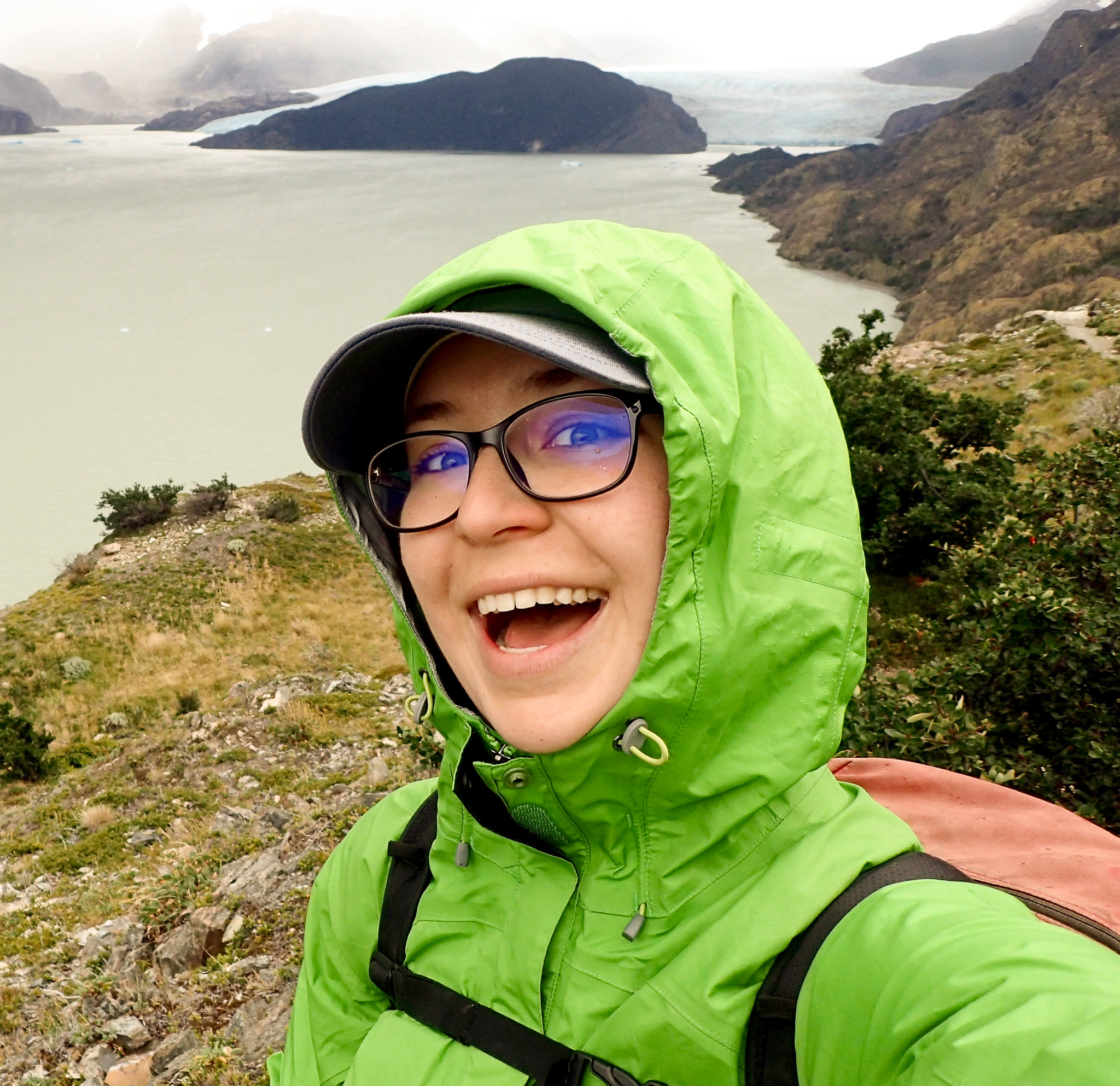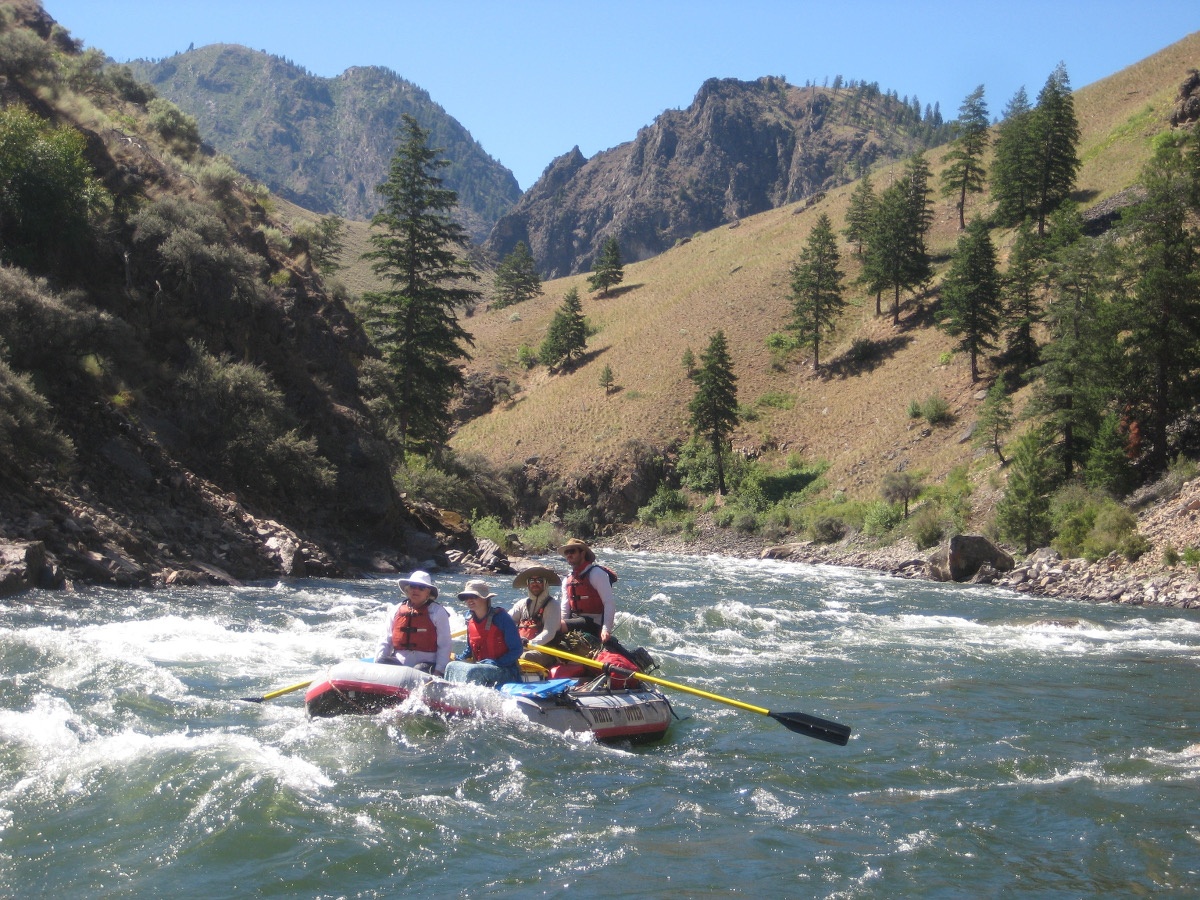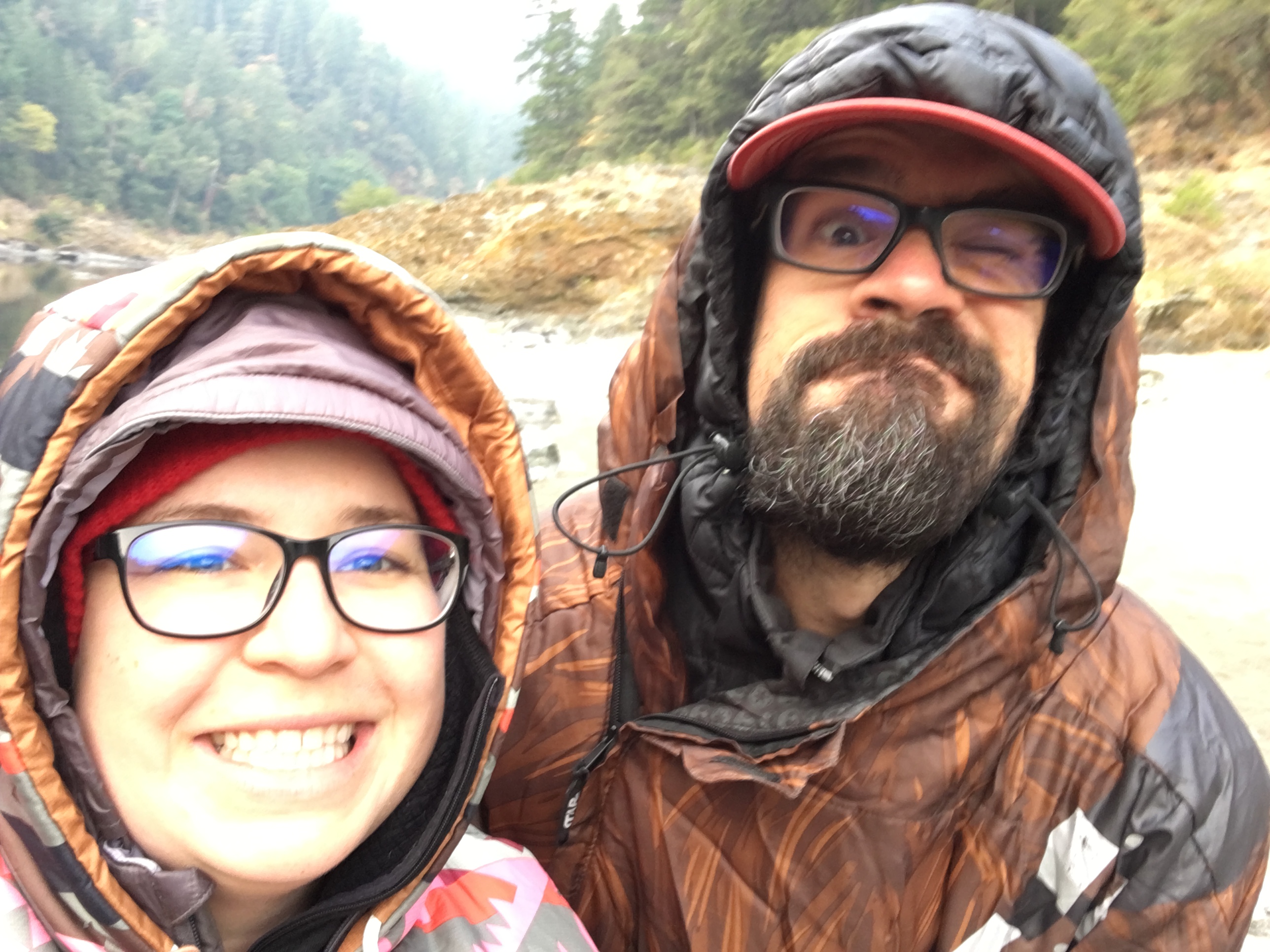
Going on an expedition is one thing—going with your spouse can be something else entirely. NOLS Instructor and Custom Education Account Manager Ashley Drake shares how, with intentional planning and plenty of good humor, adventuring with your spouse can be some of your best time spent outdoors. In September 2018 my husband Kyle and I took two weeks off from work and set out on an expedition, just the two of us.
We packed up our 13-foot oar rig and set out to raft 84 miles of the Green River in Utah and 34 miles of the Rogue River in Oregon. Our permit launch dates were back to back and left very little wiggle room for delays. We’d never been on either river before and were excited to experience the wide, windy, desert canyon of the Green, and the narrow, rocky, autumn beauty of the Rogue.
On the trip, we encountered bison and black bears just outside our tent, we got sunburned and woke with ice on our sleeping bags, we ate good food, and shared moments under the stars.
Here are a few things I learned from going on a trip with my spouse:
1. Eat Food First
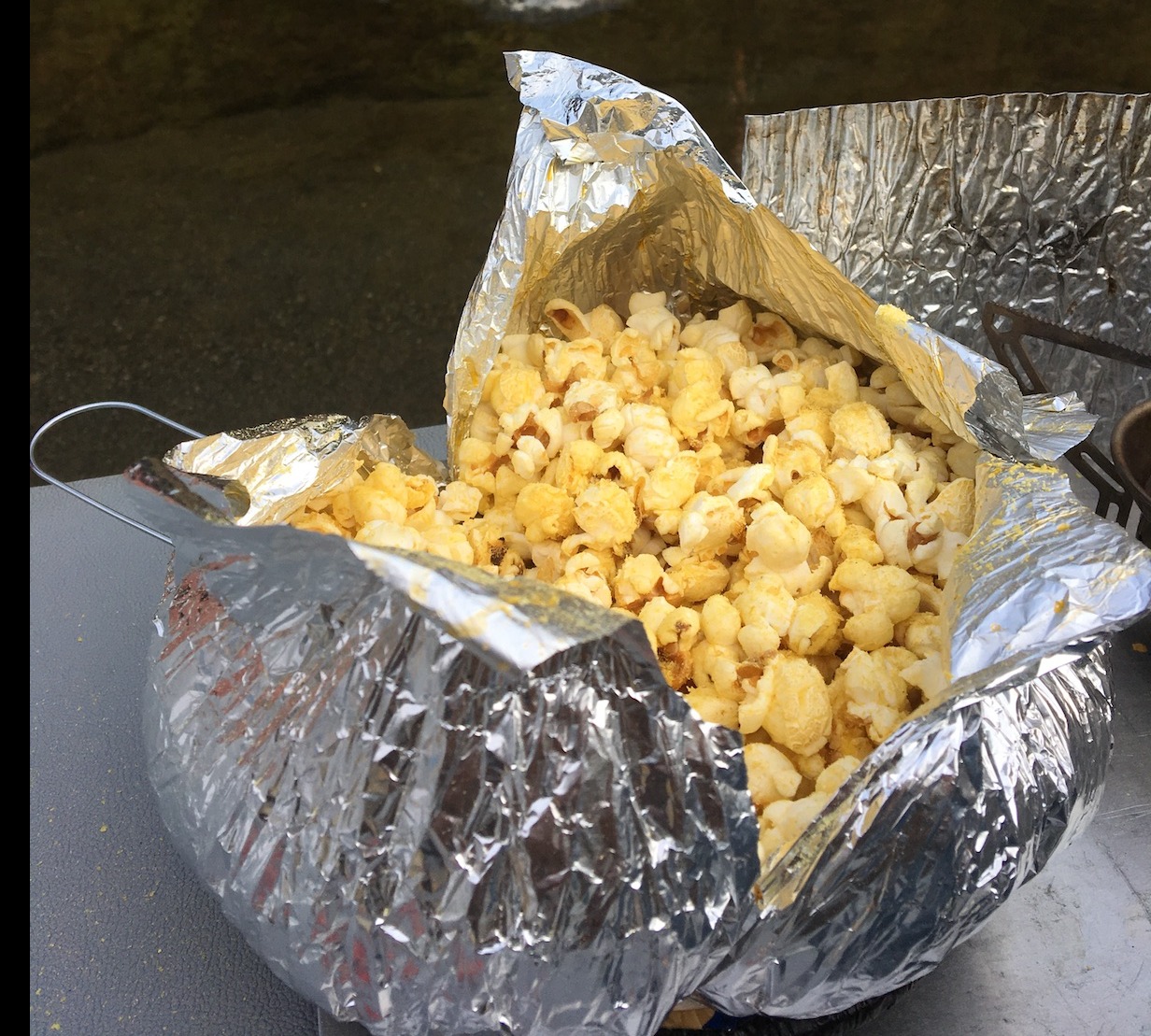
At the end of a long day on the river, there’s a lot to do before you can snuggle up with your partner and relax.
You need to:find camp, secure the raft, unload the raft, change into dry clothes, set up your tent, set up the kitchen, set up your groover, set up the dishwashing station, dig through dry boxes and the cooler to find dinner food, prepare dinner, eat dinner, clean up dinner and wash dishes, clean up dishwashing station, straining out food particles, pack leftover food and cooking supplies, tie down anything that could wash away, blow away, or be carried away by furry friends, finally plop down in a camp chair and relax.
That’s a lot—especially when you’ve been paddling all day.
You’re probably tired, hungry, chilly, and wet, so take a moment to share some calories with your partner, take a deep breath, and celebrate your day’s accomplishments. Make an appetizer, grab a beverage, share a snack and get some calories on board. You earned it. A well-fed partner is better than a hangry partner any day.
2. Don’t Hold Grudges, Make Stories
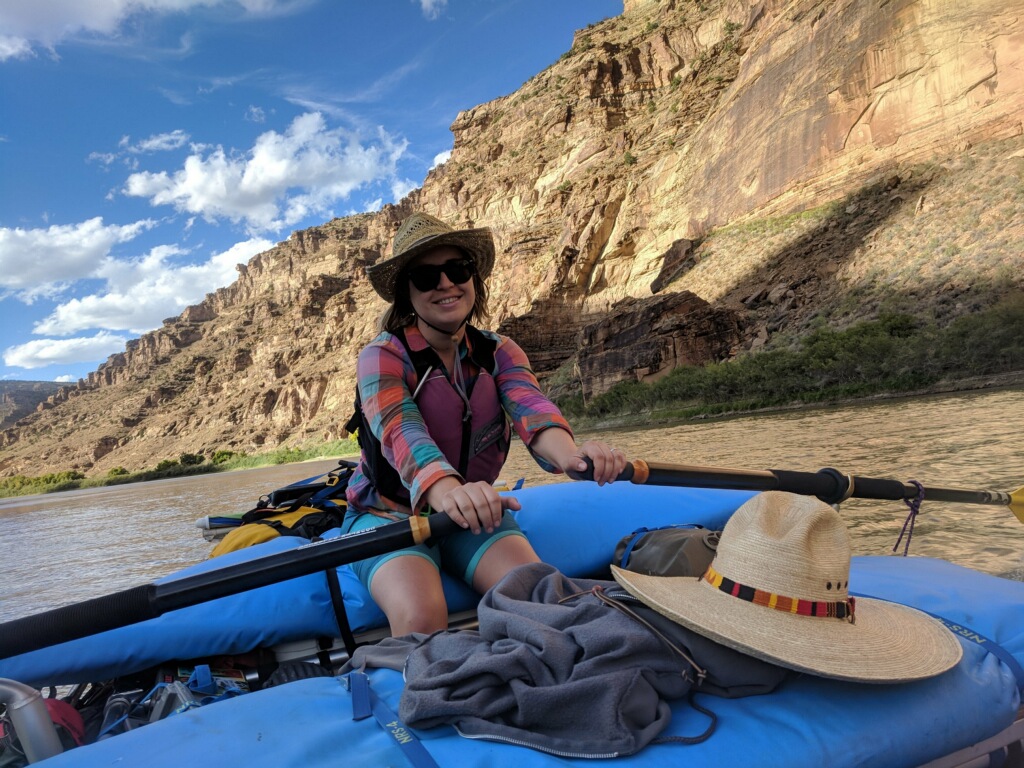
True story: my husband left me on an island in the middle of a rapid. He. Left. Me.
Through a series of events that may or may not have been my fault (ok, definitely my fault), our raft ended up pinned against a clump of boulders in the middle of a rapid.
Always cool-headed in a crisis, Kyle jumped into action and directed me to get off the raft and onto the rocks. He followed me and maneuvered the raft off the rock, jumping back on board just as the raft slid free and rocketed downstream.
Leaving me behind gripping the wet cold boulder, my mouth hanging open, wondering what the heck just happened, as I watched the boat and my life-partner float swiftly away.
Kyle secured the raft in an eddy and walked back along the shore to me. Through hand signals and yelling, the water roaring between us, we planned for me to swim the rapid and get picked up by the boat just below. I lowered myself into the whitewater and attempted to use proper swimming technique to calmly float with my feet and face above water and my booty high so I didn’t hit rocks.
Instead, I picked up speed in the wave train and quickly got a face full of water, drenching my straw sunhat so it flopped over my face. I was blind, choking on water, and gasping with the cold when I saw Kyle lean out over the side of the boat.
In a hero move worthy of a Disney movie, he heaved me out of the water and into the raft. There was crying. There was laughing. We were both fine.
When the adrenaline simmered down, I was soaked, cold, and more than a little irritated at being left. I gradually felt better, though, as my partner helped me bundle up in warm dry clothes, made me hot cocoa, and cooked a delicious dinner. I’m glad we’re both fine and that we now have a great story—and I’d be happy to never do that again.
3. Mistakes Make Memories
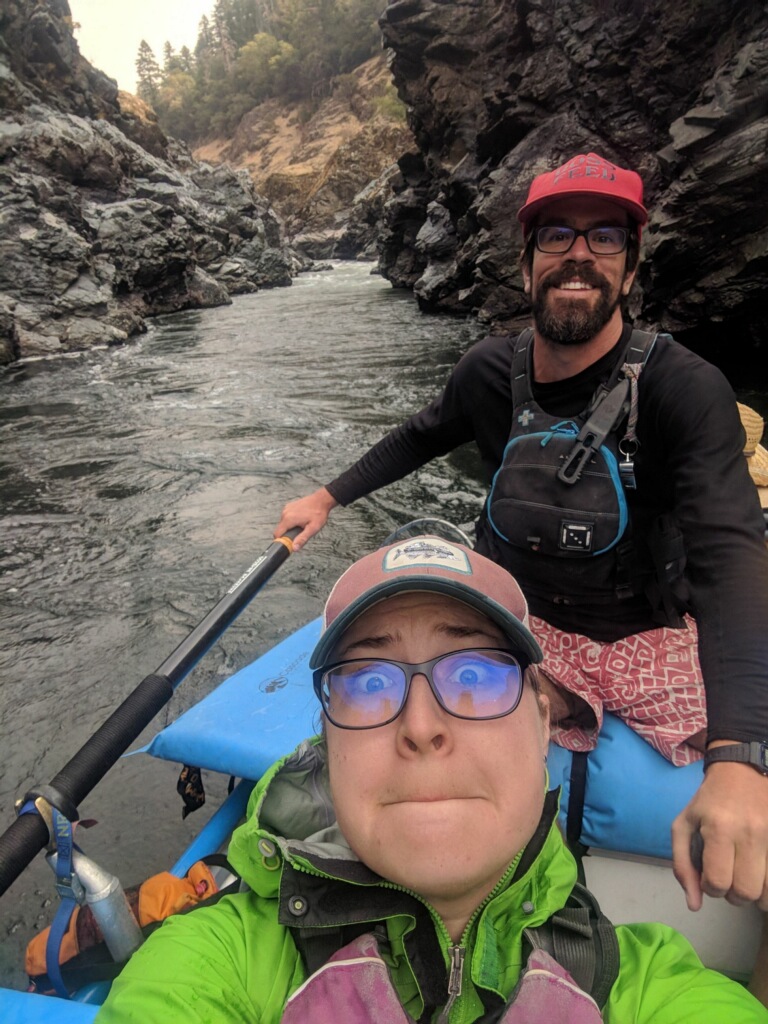
On the first half of our expedition, 84 miles on the Green River, we forgot our map. “We” left the map on the hood of our truck and were miles downriver by the time we realized it wasn’t with us.
Setting out on a multi-day river expedition without a map is...not ideal. There are hazards, rapids, campsites, historic sites, and mile markers on the map. The map is essential for risk management and making sure we covered enough distance each day to complete the trip on time.
So, we got creative, and used our GPS to figure out our speed so we could estimate our distance. We knew we had about 30 miles of flatwater to cover on our first day before we would encounter whitewater.
With that measurement, we knew we needed to keep up about the same pace for a certain number of hours to make our mileage for the day. Remarkably, it worked!
Just as the sun was getting low on the horizon and we guessed we were close to our mileage goal, we saw a large camp on the right and BOATS. There were people! They had maps!
We introduced ourselves, and our new friends shared their map with us. We took photos of the pages with my phone, then camped for the night about a half mile downriver.
The next morning we discovered that my phone, with the precious map photos, was about to die. With the battery life slowly ticking down, we created a new “map.” Kyle looked at the map photos page by page on the phone and verbally described the river as I wrote notes in a notebook. The handwritten notes became our map for the next three days.
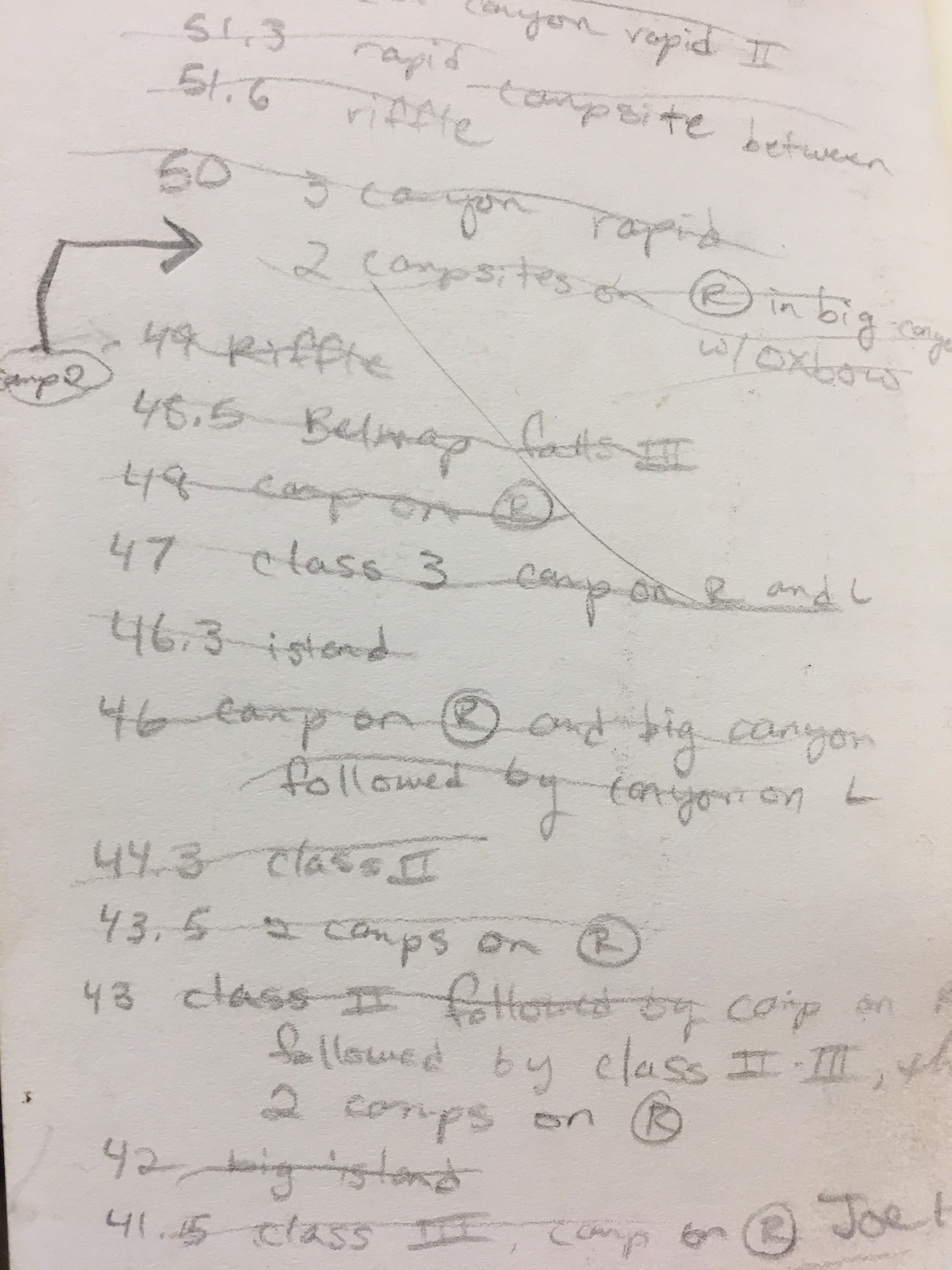
It was awesome. Instead of constantly having our heads down in the map, we just looked at the next note and kept our eyes open for landmarks. Two big canyons and a camp on the left? Class III rapid ahead. Worked like a charm. It also gave us a unique opportunity to work together as navigators, rather than only one person accessing the map at a time.
4. Set Goals—It Really Helps
Being in a relationship with an outdoor educator can be amazing. When you’re both NOLS instructors, like Kyle and I are, it can get downright ridiculous. You should hear us argue: “What I hear you saying is...” and “My perception is...” or “When you use that tone I feel…”
However, one thing I appreciate about being on an expedition with my NOLSie partner, is that we set aside time to discuss goals for ourselves at the start.
Kyle wanted to experience new river corridors with different environments and characters. He was excited to challenge his river reading skills on the fly, without relying on the experience of other river instructors he usually paddles with. I wanted more time on the oars to build my technical skills and a larger role in expedition planning (meals, gear, car shuttles, permits etc).
By setting clear goals, we could support each other to reach them. For example, Kyle trusted me to organize our vehicle shuttles and take a larger role in meal planning and gear organization than I have on group expeditions in the past. I trusted Kyle’s technical river skills when we heard rapids ahead, but didn’t have a river guide to give detailed information on what we were in for (see #3 below).
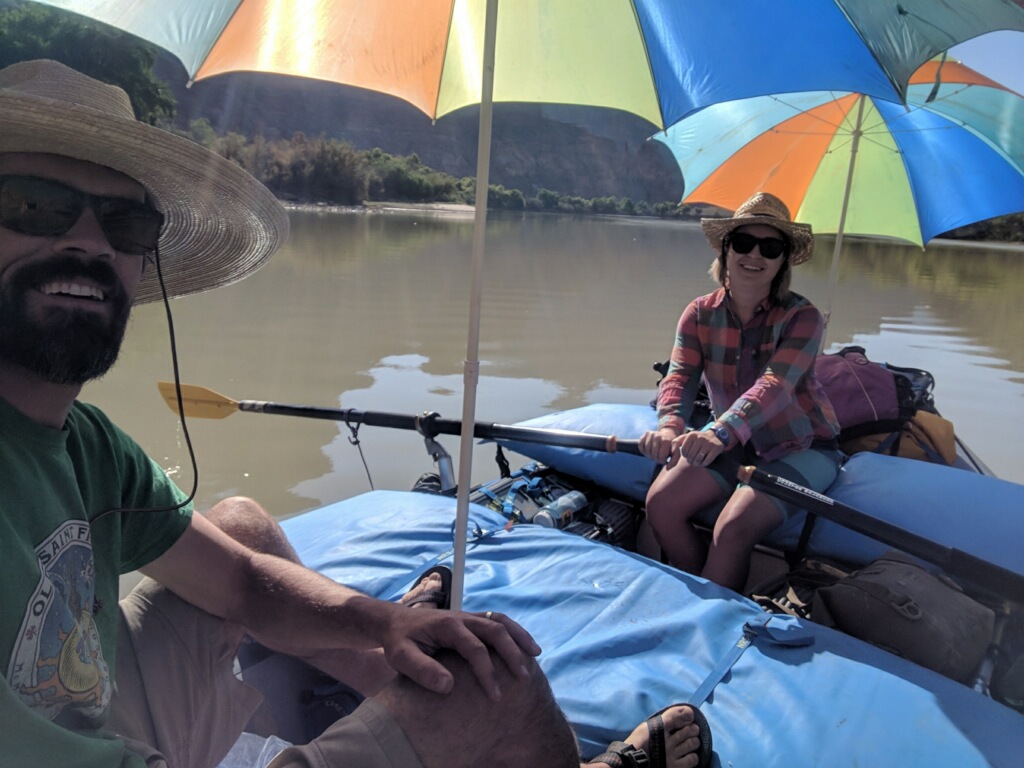
When we transitioned from the warm, mellow Green River to the cold, technical Rogue River, Kyle encouraged me to take the oars in whitewater I would normally not be comfortable handling, and I was excited to support him as he navigated intimidating rapids in narrow canyons.
Because we had goals, it wasn’t just a vacation together, it was a mission with clear measures of success.
At the end of it all, we arrived home road-weary, and staring at the stack of junk mail and bills, but we knew that we had shared an adventure and achieved some pretty cool goals, which made it all worth it.
5. Share Your Authentic Self
Embrace the opportunity to be your authentic self and to see your partner as their authentic self, too. When you share multiple days in the wilderness together, all the varnish gets stripped away.
Dirty, stinky, tired, hangry, slumpy (sleepy/grumpy), victorious, giggly, frightened, awestruck, thoughtful, and all the moments in between—you see your partner at their best and their worst.
Being in nature, without social media, phones, internet, friends, family, work, and all the distractions and expectations of life—you can see each other for who you are. The things I love most about my husband are the things that show up when we’re out in nature, exploring together. Just the two of us.
Adventure with your partner on a NOLS expedition for adults ages 23+
Editor's note: All photos by Ashley Drake.
- Skills
- River
- Nols Instructor
- Inspiring Women
- Whitewater Rafting
- Nols Expeditions
- Stories
- Rafting
- Instructor Stories
Written By
Ashley Drake
Ashley Drake is a NOLS field and wilderness medicine instructor, and is the NOLS Custom Education Operations Supervisor. She enjoys downhill skiing, cross-stitch, and brunch. She loves spending time outside with her husband, and the two will start their biggest adventure summer 2019 with the arrival of Baby Drake.


